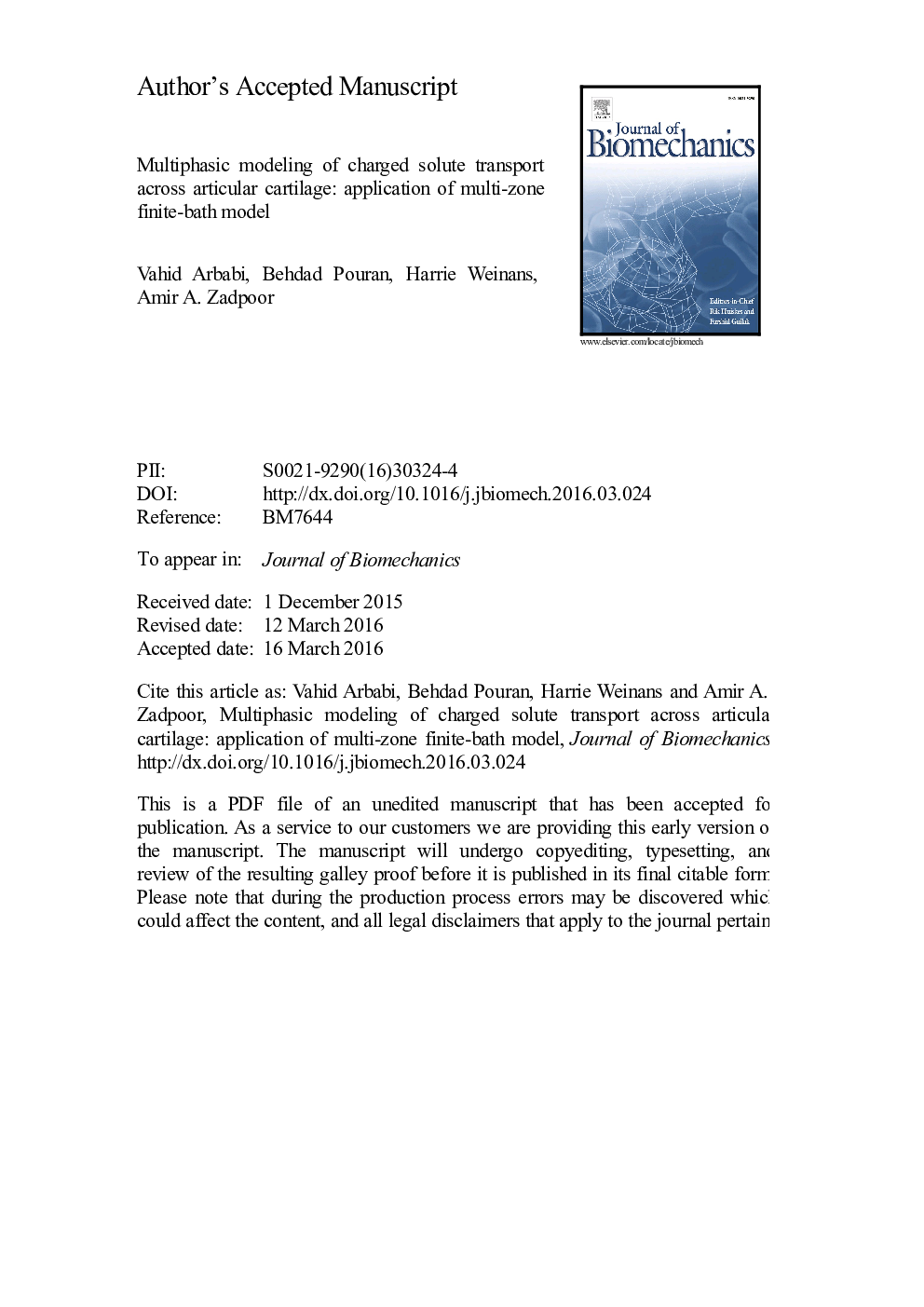| Article ID | Journal | Published Year | Pages | File Type |
|---|---|---|---|---|
| 10431041 | Journal of Biomechanics | 2016 | 32 Pages |
Abstract
Charged and uncharged solutes penetrate through cartilage to maintain the metabolic function of chondrocytes and to possibly restore or further breakdown the cartilage tissue in different stages of osteoarthritis. In this study the transport of charged solutes across the various zones of cartilage was quantified, taken into account the physicochemical interactions between the solute and the cartilage constituents. A multiphasic finite-bath finite element (FE) model was developed to simulate equine cartilage diffusion experiments that used a negatively charged contrast agent (ioxaglate) in combination with serial micro-computed tomography (micro-CT) to measure the diffusion. By comparing the FE model with the experimental data both the diffusion coefficient of ioxaglate and the fixed charge density (FCD) were obtained. In the multiphasic model, cartilage was divided into multiple (three) zones to help understand how diffusion coefficient and FCD vary across cartilage thickness. The direct effects of charged solute-FCD interaction on diffusion were investigated by comparing the diffusion coefficients derived from the multiphasic and biphasic-solute models. We found a relationship between the FCD obtained by the multiphasic model and ioxaglate partitioning obtained from micro-CT experiments. Using our multi-zone multiphasic model, diffusion coefficient of the superficial zone was up to ten-fold higher than that of the middle zone, while the FCD of the middle zone was up to almost two-fold higher than that of the superficial zone. In conclusion, the developed finite-bath multiphasic model provides us with a non-destructive method by which we could obtain both diffusion coefficient and FCD of different cartilage zones. The outcomes of the current work will also help understand how charge of the bath affects the diffusion of a charged molecule and also predict the diffusion behavior of a charged solute across articular cartilage.
Related Topics
Physical Sciences and Engineering
Engineering
Biomedical Engineering
Authors
Vahid Arbabi, Behdad Pouran, Harrie Weinans, Amir A. Zadpoor,
